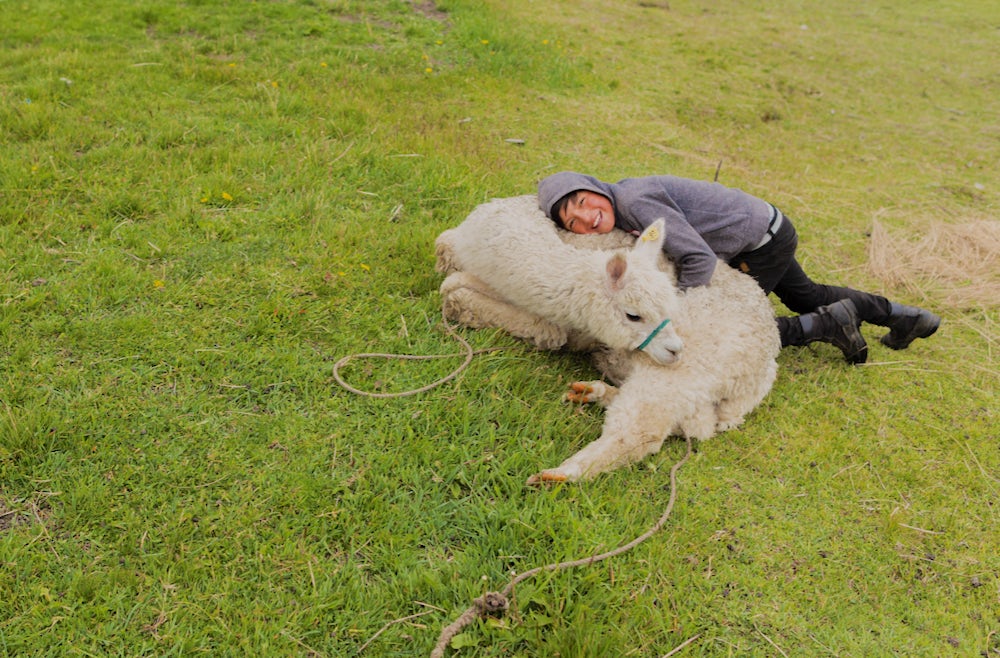Llamas and alpacas are often mistaken for the same animal, and the confusion is understandable. Alpacas and llamas are so similar because they are both part of the camelid family, which includes camels, their cousins in the eastern hemisphere.
These domesticated western camelids evolved in South America’s Andes mountains in Peru, Ecuador and Bolivia, so they developed many similar adaptations to their cold, harsh environment. But these two species actually have several different physical characteristics and personalities that are unique to them – one is sweet-tempered and the other can be a little salty, so you’ll want to be able to tell the difference in case you ever meet one of these fascinating creatures.
Alpacas and llamas both have adorable ears, but in different ways. Alpacas have short, pointed ears that look kind of like elf ears. Llama ears are longer and more rounded, kind of like bananas.
Llamas have long snouts that stick out, while alpaca faces look like a llama with its face smooshed in – in a cute way!
Llamas can grow up to four feet tall at the shoulder and weigh up to 400 pounds, whereas Alpacas are more petite at around three feet tall and 150 pounds.
Llamas and alpacas both grow thick fiber to ward off the cold of their native highland habitat. But alpacas grow fleece that is much finer, softer and thicker, while llama fleece is more like hair. Most alpacas are the huacaya variety, which look a lot like teddy bears because of their crimpy, fluffy fleece. The rarer suri variety grow longer, shiny fiber.
Alpacas are used to traveling in herds, so they are typically shy and polite. Llamas, on the other hand, are more independent. They can be assertive and pretty rude, to be honest. It’s true that you’re in danger of getting spat on by both animals, but it’s more likely with the peevish llama, while alpacas are generally sweeter.
Alpacas’ docile nature means they can make great pets. Although they are not native to the United States, these hardy animals can still thrive as long as they get a good shave for hot weather. You’ve got to get at least two, though — herd animals get lonely!

Alpacas and llamas are both domesticated breeds of livestock that were cultivated for different reasons. Alpacas were bred from native vicuña, their wild camelid ancestors, for their ridiculously soft fiber. Alpaca fiber and the much rarer vicuña fiber are prized the world over for making luxe sweaters, blankets, scarves and anything else cozy and warm. Unlike sheep’s wool, alpaca fiber lanolin-free and therefore hypoallergenic, and it is not at all itchy to the touch.
Llamas, on the other hand, originated from another Andean camelid, the wild guanaco. Llama fiber is often sheared and used for weaving and other fiber arts. More often, llamas are used as pack animals to carry heavy loads on long treks, or for their meat. The more aggressive and independent nature of llamas also makes them great guard animals for herds of sheep or alpacas.
One little-known purpose that alpacas and llamas have in common is lifting families out of poverty. Raising alpacas and llamas can help vulnerable communities in the Andean highlands make living incomes due to these animals' hardiness in tough climates, valuable fiber and gentleness on the environment. You can help by donating an alpaca today.

